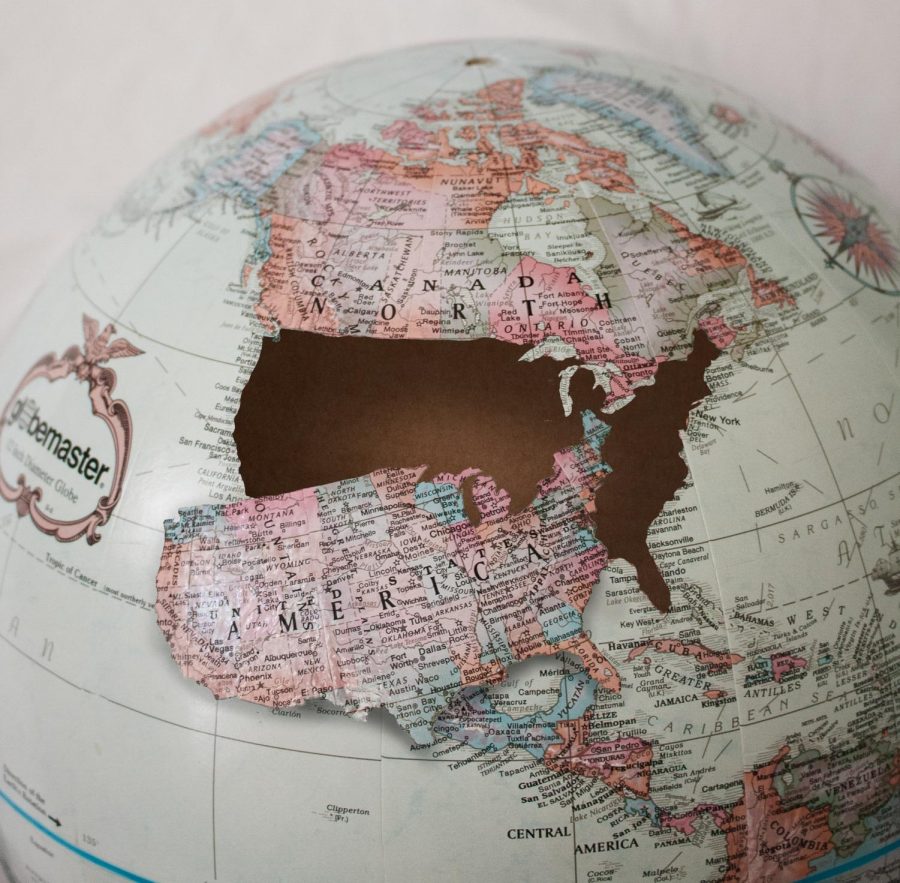American Un-exceptionalism
The shortcomings of America’s education system
June 24, 2019
The United States. The superpower of the West, the champion of democracy, and the home of the American dream. It is the land of endless opportunity. Yet, despite the idea of American exceptionalism, the United States is falling behind in one of the most critical categories of all: education.
The U.S. spends more money per student than nearly every other country in the world, yet it still fails to match other developed nations in literacy, test scores, and college diplomas. A well-educated population is the foundation for any successful democracy, and if that’s true, the U.S. is in dire need of improvement.
The Organization for Economic Cooperation and Development measures academic excellence through the Program for International Student Assessment, or PISA. This test is administered to 15-year-olds around the world every three years, and according to the results Singapore, China, South Korea, Canada, and Australia have some of the best education systems in the world. On the other hand, in 2015, the U.S. scored 40th in math, 25th in science, and 24th in reading. Though the test isn’t perfect, these results are still shocking.
However, due to the wide variety of education systems tested, the results are not entirely representative of their nation. “In America, we are afforded a free public education, we don’t select and sort out students. Everyone gets the test in America, but that’s not true of other countries,” EHS principal Dan Radicia said. In countries such as Japan and Germany children must pass a test to even enter high school, otherwise, they are set on a path for vocational training. This distribution of students does shift the test in their favor. Nevertheless, the U.S. suffered from some of the lowest scores of any developed nation, a sure sign that something needs to change.
The U.S. is a strong nation with no excuse for poor education. Fifty years ago the majority of Singapore was illiterate, and now they have one of the best education systems in the world. So, what is the U.S. doing wrong? Although the U.S. spends millions on education, many of the nation’s teachers go underpaid and underappreciated. In many other countries, teaching is a highly respected and highly competitive career. As universities lowered acceptance rates for teacher training courses, a new pool of better-educated teachers emerged. “Because of the higher pay [other nations] are competitive with their salary for educators versus what’s out there in the rest of the business world,” Radicia said. He went on to explain that when salaries are increased it attracts more highly qualified educators to the school system.
Many critics of the American education system argue for a more rigorous curriculum. Yono Kamikawa, a foreign exchange student from Japan, agreed that EHS is quite different from her school back home. “Japan thinks studies are very important, so Japanese school is very hard,” Kamikawa said.
After working as a teacher in Japan, Mariko Anderson, the EHS Japanese teacher, agreed. “In Japan, school and activities come first, but here if a student is scheduled to work then they go to work. If there is an extracurricular that we do as a Japanese class [students] say ‘I can’t come I have to go to work,’” Anderson said. “Students need to take more responsibility for their actions. They say don’t leave kids behind, but is that really helping the kid?” Anderson asked. “Lots of kids when they go to college their teachers don’t care and don’t give retakes, so many kids can’t graduate in four years.”
One glaring difference in the U.S. compared to the rest of the world is its monolingualism. “I think that where we lag behind the rest of the world is that we are not fluent in multiple languages,” Radicia said. Studies show that an understanding of multiple languages increases cognitive ability, memory, and focus. In many other European and Asian countries curriculums contain not only knowledge of one language, but two or three.
However, that’s not to say the U.S. school system is without its strengths. “Teachers are very different here because in Japan teachers aren’t very close to students,” Kamikawa said. The close and casual school environment found in EHS allows students to better communicate with their teachers and develop more meaningful relationships.
Additionally, many of the differences between American schools and international ones stem from deeply-rooted cultural behaviors. “In many cases the cultural background is different as well, so I don’t think [American schools] are behind, the Elkhorn education does a really good job of keeping it up, they have kids who go to Ivy league schools, so I wouldn’t say it’s behind, it’s just different,” Anderson said.
Students at EHS are particularly fortunate to receive one of the best educations this state has to offer. “The average Elkhorn student performs higher than the average national student, that is true of state and local levels as well,” Radicia said. While in many other states, governments struggle to find funding to keep their schools running. In fact, studies show that the majority of U.S. states are spending less on education today than they did in 2008. Elkhorn has a high standard for education, but if the U.S. wants more college graduates and a better-educated workforce a drastic change in policy must be made.
Even at EHS, there is room to change. In today’s rapidly growing global economy, jobs can go anywhere in the world. If the United States wishes to maintain their status as a superpower in technology and engineering then students must be able to compete on an international scale. Luckily, dozens of other nations can serve as examples.
The first change the U.S. can make is in funding. The public education offered in this country is grossly unequal. Many schools rely on funding from property taxes, thus schools in impoverished areas receive less funding. Canada, on the other hand, has eliminated this problem. Canada has millions of students and organizes funding based on provinces. Each province is responsible for collecting tax money and distributing it fairly based on each school’s size and needs. If programs such as this were implemented in the U.S. it could eliminate the inequality evident in public education.
In today’s test-fueled school system many students lack the critical thinking skills they need to succeed in college or later in life. “To me, critical thinking is extending the lesson into the unknown to create something new,” Radicia said. “Arguing is one of the best critical thinking skills we offer our kids. Having to debate two sides shows that you are a complex thinker, and I think teachers should do more of it.” While high schools pour hours into ACT and SAT prep, students are missing lessons in creativity and critical thinking; the skills that will actually help them succeed.
The final, and most important, solution is to value teachers. Just a few weeks ago, thousands of teachers in Los Angeles went on strike. Educators have the ability to shape the future of the country, and the fact that they have to fight for proper treatment is unacceptable. “For some reason [celebrities] make more money and are valued more in our society than educators, but I want 80,000 people to be in Memorial Stadium cheering on UNL’s best biology professor,” Radicia said. While that may not happen, pay raises, smaller classes, and more time to collaborate with other teachers are viable, and necessary, solutions.
There is no question that the state of education in this country could be improved. If the U.S. wishes to forge a brighter future then the change must start in schools.


